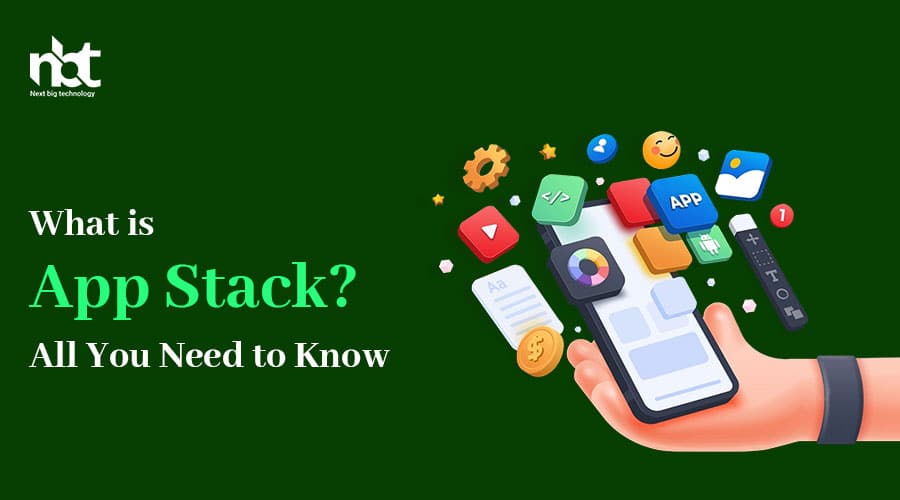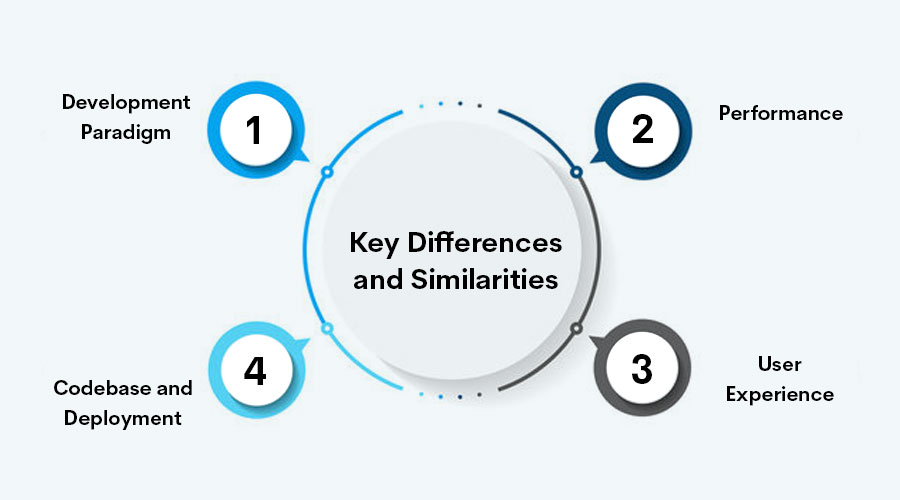Table of Contents
Definition of App Stack: Understanding the Basics
In today’s digital age, where applications dominate every aspect of our lives, understanding the fundamentals of the app stack is crucial. Whether you’re a seasoned developer or a curious enthusiast, grasping the basics of the app stack is akin to deciphering the blueprint of the digital world. So, let’s embark on a journey to demystify the app stack and unravel its complexities.
What is an App Stack?
At its core, an app stack, short for application stack, refers to the combination of software and technologies that power a particular application. Think of it as a layered cake, where each layer serves a specific purpose and contributes to the overall functionality of the application. These layers work together seamlessly to deliver a cohesive user experience.
Understanding the Layers:
- Presentation Layer: Also known as the frontend, this layer is what users interact with. It includes elements such as the user interface (UI), design components, and user experience (UX) features. Technologies like HTML, CSS, and JavaScript are commonly used in this layer to create visually appealing and interactive interfaces.
- Application Layer: Sitting between the presentation and data layers, the application layer is where the business logic resides. This is where data processing, validation, and other application-specific functionalities take place. Frameworks like React, Angular, or Vue.js are often used to build robust frontend applications in this layer.
- Data Layer: The data layer, also known as the backend, is responsible for managing and storing data. This includes databases, servers, and APIs (Application Programming Interfaces) that enable communication between the frontend and backend. Popular technologies like Node.js, Django, or Flask are used to develop scalable and efficient backend systems.
The Importance of a Well-Structured App Stack: A well-structured app stack is essential for building reliable, scalable, and maintainable applications. By separating concerns into distinct layers, developers can achieve modularity, making it easier to update or replace specific components without affecting the entire system. Additionally, a well-designed app stack promotes collaboration among team members, as each layer can be developed and tested independently.
SEO Optimization and App Stacks: In the realm of digital marketing, understanding the relationship between app stacks and SEO (Search Engine Optimization) is crucial. An optimized app stack not only enhances the user experience but also improves search engine rankings. Factors such as page load speed, mobile-friendliness, and structured data play a significant role in SEO, all of which are influenced by the architecture of the app stack.
Components of an App Stack: Breaking Down the Layers

In the dynamic world of technology, understanding the intricacies of an app stack is crucial for developers and businesses alike. An app stack, also known as a technology stack, is the collection of software and tools used to build and operate a digital application. Think of it as a layered cake, with each layer serving a distinct purpose in the functionality and performance of the application. In this article, we’ll delve into the components of an app stack, breaking down the layers to gain a comprehensive understanding of their roles and interactions.
The Presentation Layer: At the top of the stack lies the presentation layer, also known as the front end. This is the user interface that users interact with directly. It includes elements such as the graphical user interface (GUI), navigation menus, buttons, and other visual components that facilitate user interaction. Technologies commonly used in the presentation layer include HTML, CSS, and JavaScript frameworks like React and Angular.
The Application Layer: Beneath the presentation layer lies the application layer, which contains the logic and functionality of the application. This is where the business logic resides, handling tasks such as data processing, user authentication, and business rule implementation. Popular technologies used in the application layer include programming languages like Python, Java, and C#, as well as frameworks such as Django, Spring, and .NET.
The Data Layer: The data layer, situated at the bottom of the stack, is responsible for managing and storing data used by the application. This includes databases, data warehouses, and other storage systems. Common databases used in the data layer include relational databases like MySQL and PostgreSQL, as well as NoSQL databases like MongoDB and Cassandra.
The Integration Layer: In between the application and data layers lies the integration layer, which facilitates communication and data exchange between different components of the app stack. This includes APIs (Application Programming Interfaces) that allow different systems to interact with each other, as well as middleware and messaging systems for handling asynchronous communication. Technologies commonly used in the integration layer include RESTful APIs, GraphQL, and message brokers like RabbitMQ and Apache Kafka.
DevOps and Infrastructure Layer: While not always considered part of the traditional app stack, the DevOps and infrastructure layer plays a crucial role in the development, deployment, and operation of the application. This includes tools and practices for continuous integration and deployment (CI/CD), containerization technologies like Docker and Kubernetes, as well as cloud services such as AWS, Azure, and Google Cloud Platform.
The Role of Frontend in an App Stack: User Interface and Experience
In the dynamic landscape of digital applications, frontend development stands as the cornerstone for delivering exceptional user experiences. The frontend, often referred to as the client-side of development, encompasses everything users interact with directly on their screens. From captivating visuals to seamless navigation, the frontend plays a pivotal role in shaping user interface (UI) and experience (UX), thereby influencing the success of an application.
Understanding Frontend Development: Frontend development involves the utilization of various technologies such as HTML, CSS, and JavaScript to create visually engaging and interactive interfaces. It bridges the gap between design and functionality, transforming static designs into dynamic, user-friendly interfaces.
Crafting User-Centric Interfaces: At the heart of frontend development lies the objective of crafting interfaces that resonate with users. A well-designed UI not only attracts users but also ensures intuitive navigation and accessibility. Design elements such as layout, color schemes, typography, and graphics are meticulously chosen to evoke desired emotions and facilitate smooth interaction.
Elevating User Experience: While UI focuses on the look and feel of an application, UX encompasses the overall experience a user has while interacting with it. Frontend developers work tirelessly to optimize UX by implementing features such as responsive design, which ensures seamless performance across various devices and screen sizes. Additionally, they enhance usability through features like intuitive navigation menus, interactive elements, and feedback mechanisms.
Driving Engagement and Retention: An intuitive and visually appealing frontend is instrumental in driving user engagement and retention. Users are more likely to spend time on an application that provides a seamless and enjoyable experience. By leveraging animations, micro-interactions, and other interactive elements, frontend developers create immersive experiences that captivate users and encourage them to return.
Importance in Branding and Differentiation: The frontend also plays a crucial role in shaping a brand’s identity and differentiation in the market. Consistent branding elements, such as logos, color palettes, and visual styles, create a cohesive brand experience across all touchpoints. Moreover, innovative UI/UX design can set an application apart from competitors, making it memorable and distinct in the minds of users.
Backend Infrastructure: Powering the App’s Functionality

In today’s digital age, where seamless user experiences reign supreme, the backend infrastructure of applications serves as the unsung hero, powering functionalities that often go unnoticed but are essential for smooth operations. From social media platforms to e-commerce giants, the efficiency and reliability of backend systems play a pivotal role in delivering an unparalleled user experience.
Understanding Backend Infrastructure: At its core, backend infrastructure refers to the array of servers, databases, and software components that work tirelessly behind the scenes to manage data, process requests, and ensure the smooth functioning of an application. Unlike frontend development, which focuses on the user interface and interaction, backend development dives deep into the intricacies of data management, security, and performance optimization.
Data Management and Storage: One of the primary functions of backend infrastructure is managing vast amounts of data generated by users’ interactions with the application. Whether it’s storing user profiles, product information, or transaction records, a robust backend system utilizes databases such as MySQL, MongoDB, or PostgreSQL to organize and retrieve data efficiently. By implementing scalable solutions, backend engineers ensure that applications can handle exponential growth without compromising performance.
Processing Requests in Real-Time: In today’s fast-paced digital landscape, users expect instant responses to their actions. Whether it’s posting a tweet, searching for products, or streaming content, backend infrastructure must process requests swiftly to deliver a seamless user experience. Technologies like Node.js, Django, and Flask empower developers to build responsive backend systems capable of handling concurrent requests without breaking a sweat.
Ensuring Security and Compliance: With data breaches and cyber threats on the rise, security remains a top priority for app developers and users alike. Backend infrastructure plays a crucial role in implementing robust security measures to safeguard sensitive information and prevent unauthorized access. From encryption techniques to access control mechanisms, backend engineers employ a multi-layered approach to fortify applications against potential threats while ensuring compliance with regulations such as GDPR and CCPA.
Optimizing Performance for Scalability: As applications grow in popularity, backend infrastructure must adapt to accommodate increasing traffic and user demands. Scalability is not merely an option but a necessity in today’s dynamic environment. Through techniques like load balancing, caching, and horizontal scaling, backend engineers optimize performance to ensure that applications remain responsive even during peak usage periods.
APIs and Integrations: Connecting the Dots in Your App Stack
In today’s tech-driven world, the success of any application hinges on its ability to seamlessly connect with various platforms, services, and data sources. This interconnectedness is made possible through the magic of APIs (Application Programming Interfaces) and integrations. Gone are the days of standalone applications; now, it’s all about creating a cohesive ecosystem where different tools work in harmony to deliver unparalleled user experiences and functionality.
The Role of APIs:
APIs act as the bridge between different software systems, allowing them to communicate and share data effortlessly. They define the methods and data formats that applications can use to request and exchange information, essentially enabling them to “talk” to each other in a language they both understand. Whether it’s retrieving weather data from a third-party service, processing payments securely, or integrating social media functionality, APIs make it all possible.
Seamless Integration:
Integrations take API usage to the next level by seamlessly incorporating external services and functionalities into your application. These integrations can range from basic plugins and extensions to complex middleware solutions that orchestrate data flow between multiple systems. By leveraging integrations, developers can enhance their app’s capabilities without reinventing the wheel, saving time and resources while delivering a richer user experience.
Benefits of a Connected App Stack:
- Enhanced Functionality: Integrating with third-party APIs allows you to tap into a vast array of features and services without having to build them from scratch. This means faster development cycles and access to cutting-edge technologies that can differentiate your app in the market.
- Improved Efficiency: By automating tasks and streamlining workflows through integrations, you can boost productivity and reduce manual effort. Whether it’s syncing customer data across platforms or automating marketing campaigns, integrations help your team work smarter, not harder.
- Scalability and Flexibility: As your app grows, so do your integration needs. APIs provide the flexibility to scale your application’s functionality without major architectural overhauls. Whether you’re adding new features or expanding into new markets, a well-designed integration strategy ensures your app remains agile and adaptable to changing requirements.
- Better User Experience: Seamless integration with external services translates to a smoother user experience. Whether it’s personalized recommendations powered by AI algorithms or one-click social login, integrations can delight users by offering convenience and value at every touchpoint.
Best Practices for API and Integration Management:
- Choose Wisely: Select APIs and integration partners that align with your app’s goals, values, and technical requirements. Look for well-documented APIs with robust support and a track record of reliability.
- Prioritize Security: Protect sensitive data and ensure compliance with privacy regulations by implementing robust security measures, such as encryption, authentication, and access controls, across your integration ecosystem.
- Monitor and Maintain: Regularly monitor API usage and performance metrics to identify potential issues and optimize resource allocation. Stay proactive in addressing vulnerabilities and updating integrations to mitigate security risks.
- Stay Agile: Embrace an agile mindset when designing and implementing integrations. Be prepared to iterate and evolve your integration strategy based on feedback, changing market dynamics, and emerging technologies.
Database Management in App Stacks: Storing and Retrieving Data
In today’s digital age, where data reigns supreme, efficient database management is crucial for the success of any application stack. Whether you’re developing a mobile app, a web platform, or an enterprise-level software solution, understanding how to store and retrieve data effectively is paramount. In this comprehensive guide, we’ll delve into the intricacies of database management within app stacks, exploring best practices, optimization techniques, and the latest trends.
Understanding Database Management in App Stacks: At the heart of any application stack lies the database—a structured collection of data that serves as the backbone for storing, organizing, and retrieving information. Database management involves a set of processes and methodologies aimed at ensuring the reliability, availability, and performance of these databases.
Choosing the Right Database System: The first step in effective database management is selecting the right database system for your application stack. With a plethora of options available, ranging from traditional relational databases like MySQL and PostgreSQL to NoSQL databases like MongoDB and Cassandra, it’s essential to weigh factors such as data structure, scalability, and performance requirements.
Designing a Robust Data Schema: Once you’ve chosen the appropriate database system, designing a robust data schema is imperative. A well-thought-out schema defines the structure of your database, including tables, fields, and relationships, and plays a vital role in optimizing data storage and retrieval operations.
Optimizing Data Storage: Efficient data storage is essential for minimizing storage costs and maximizing performance. Techniques such as normalization, denormalization, indexing, and partitioning can help optimize data storage, ensuring that your database operates smoothly even as it scales to accommodate growing volumes of data.
Streamlining Data Retrieval: Fast and reliable data retrieval is critical for delivering a seamless user experience. By employing techniques such as query optimization, caching, and data replication, you can streamline data retrieval operations, reducing latency and improving application responsiveness.
Implementing Data Security Measures: Protecting sensitive data from unauthorized access is paramount in database management. Implementing robust security measures, such as encryption, authentication, and access control, helps safeguard your data against security threats and compliance risks.
Monitoring and Performance Tuning: Continuous monitoring and performance tuning are essential for maintaining the optimal performance of your database. By leveraging monitoring tools and performance metrics, you can identify bottlenecks, optimize resource utilization, and fine-tune your database configuration for optimal performance.
Embracing Automation and Scalability: As your application stack grows, automation and scalability become key considerations in database management. Embracing automation tools and cloud-based solutions enables you to automate routine tasks, scale your database infrastructure seamlessly, and adapt to changing workload demands.
Security Measures in App Stacks: Safeguarding User Information
In the digital age, where information is abundant and technology is ubiquitous, safeguarding user data is paramount. With the proliferation of apps across various platforms, ensuring the security of user information within app stacks has become a critical concern for developers and businesses alike. From personal details to financial information, users entrust a wealth of sensitive data to applications, necessitating robust security measures to protect their privacy and prevent unauthorized access. In this article, we delve into the importance of security measures in app stacks and explore strategies to safeguard user information effectively.
Understanding App Stacks:
Before delving into security measures, it’s essential to grasp the concept of app stacks. An app stack refers to the collection of software applications, tools, and technologies used to develop, deploy, and manage an application. It encompasses various layers, including the presentation layer (frontend), application layer (middleware), and data layer (backend), each playing a crucial role in the functioning of the application.
The Importance of Security Measures:
In today’s interconnected ecosystem, app stacks are susceptible to a myriad of security threats, ranging from data breaches and malware attacks to phishing scams and insider threats. The ramifications of a security breach can be severe, resulting in financial losses, reputational damage, and legal consequences. Moreover, with regulations such as the General Data Protection Regulation (GDPR) and the California Consumer Privacy Act (CCPA) imposing stringent requirements on data protection, businesses face heightened pressure to prioritize security.
Key Security Measures:
- Data Encryption: Implementing encryption mechanisms such as SSL/TLS ensures that data transmitted between the client and server remains secure and confidential. Encryption converts plaintext data into ciphertext, making it unintelligible to unauthorized parties.
- Authentication and Authorization: Adopt robust authentication methods, such as multi-factor authentication (MFA), to verify the identity of users and prevent unauthorized access. Additionally, implement stringent authorization controls to restrict users’ access privileges based on their roles and permissions.
- Secure Authentication Protocols: Utilize secure authentication protocols like OAuth and OpenID Connect to facilitate secure authentication and authorization processes, particularly in scenarios involving third-party integrations.
- API Security: Secure APIs (Application Programming Interfaces) by implementing authentication mechanisms, rate limiting, and input validation to prevent API abuse, injection attacks, and data breaches.
- Regular Security Audits and Penetration Testing: Conduct regular security audits and penetration testing to identify vulnerabilities and weaknesses within the app stack. Addressing these issues promptly helps mitigate potential security risks and fortify defenses against cyber threats.
- Patch Management: Stay vigilant about software updates and patches released by vendors to address security vulnerabilities and vulnerabilities promptly. Implement a robust patch management strategy to ensure that all components of the app stack are up-to-date and protected against known vulnerabilities.
- Data Minimization and Anonymization: Adopt a data minimization approach by collecting only the necessary information required for the application’s functionality. Additionally, anonymize or pseudonymize sensitive data to reduce the risk of data exposure in the event of a breach.
- Employee Training and Awareness: Educate employees about security best practices, data handling procedures, and the importance of safeguarding user information. Foster a culture of security awareness to empower employees to recognize and report potential security threats effectively.
Scalability Considerations: Growing Your App Stack with Demand
In today’s fast-paced digital landscape, scalability is not just a buzzword; it’s a critical aspect of any successful app development strategy. As your user base grows and demand increases, your application stack must be prepared to handle the load effectively. Scaling up your app stack with demand requires careful planning, foresight, and the right technological infrastructure. In this article, we’ll explore some essential considerations to ensure the seamless growth of your app in response to increasing demand.
Understanding Scalability:
Scalability refers to the ability of a system to handle growing amounts of work in a graceful and efficient manner. When it comes to app development, scalability is crucial for accommodating a growing user base, increasing data volume, and handling spikes in traffic without compromising performance or reliability. There are two primary types of scalability: vertical scalability (scaling up) and horizontal scalability (scaling out).
Vertical scalability involves adding more resources, such as CPU, memory, or storage, to a single server or machine. While vertical scaling can provide immediate performance improvements, it has inherent limitations in terms of the maximum capacity of a single server.
Horizontal scalability, on the other hand, involves adding more machines or instances to distribute the workload across multiple servers. This approach offers better scalability potential as it allows for virtually unlimited expansion by adding more servers to the infrastructure.
Key Considerations for Scaling Your App Stack:
- Architecture Design: Building a scalable app starts with a well-thought-out architecture. Choose a modular, decoupled architecture that allows components to scale independently. Microservices architecture, for example, enables you to break down your application into smaller, manageable services that can be scaled individually based on demand.
- Elastic Infrastructure: Leverage cloud computing platforms like AWS, Azure, or Google Cloud that offer elastic infrastructure capabilities. Cloud services provide on-demand scalability, allowing you to scale resources up or down dynamically based on traffic patterns and workload fluctuations.
- Load Balancing: Implement a load balancing mechanism to distribute incoming traffic evenly across multiple servers or instances. Load balancers help optimize resource utilization and improve the overall performance and reliability of your app stack.
- Caching and CDN: Utilize caching mechanisms to store frequently accessed data and static content closer to the end-users. Content Delivery Networks (CDNs) can further improve the delivery speed by caching content on edge servers located geographically closer to the users.
- Database Scaling: Choose a database solution that supports horizontal scalability, such as NoSQL databases like MongoDB or distributed SQL databases like Google Spanner. Distribute your database workload across multiple nodes to handle increased data volume and query throughput.
- Monitoring and Auto-scaling: Implement robust monitoring and auto-scaling solutions to continuously monitor the performance metrics and automatically adjust resources based on predefined thresholds. Tools like Prometheus, Grafana, and Kubernetes Horizontal Pod Autoscaler can help you achieve efficient auto-scaling.
- Fault Tolerance and Redundancy: Design your app stack with fault tolerance and redundancy in mind to mitigate the risk of service disruptions and data loss. Use replication, data backups, and disaster recovery strategies to ensure high availability and data integrity.
Mobile vs. Web App Stacks: Key Differences and Similarities
In the ever-evolving landscape of digital technology, the realm of applications stands as a testament to innovation. With the proliferation of smartphones and the omnipresence of the internet, the development of applications has bifurcated into two main avenues: mobile and web. Each avenue employs its distinct stack of technologies, presenting unique characteristics and functionalities. In this discourse, we delve into the disparities and convergences between mobile and web app stacks, shedding light on their key differences and similarities.
Mobile App Stacks: Power in Performance
Mobile app development revolves around crafting software applications tailored specifically for mobile devices like smartphones and tablets. The mobile app stack comprises a set of technologies and frameworks optimized for the constraints and capabilities of mobile platforms. At the core of most mobile app stacks lie native development and cross-platform frameworks.
Native Development: Native app development entails creating applications using platform-specific programming languages and tools. For instance, iOS apps are predominantly developed using Swift or Objective-C, while Android apps are built using Java or Kotlin. Leveraging the native development approach allows developers to harness the full potential of device features and ensure optimal performance. However, it necessitates separate codebases for different platforms, leading to increased development time and effort.
Cross-Platform Frameworks: Cross-platform frameworks like React Native, Flutter, and Xamarin offer a compromise between efficiency and performance. These frameworks enable developers to write code once and deploy it across multiple platforms, streamlining the development process. While sacrificing a fraction of native performance, cross-platform solutions facilitate faster time-to-market and maintenance.
Web App Stacks: Versatility in Accessibility
Contrary to mobile apps, web applications are accessed through web browsers across various devices, including desktops, laptops, and mobile devices. The web app stack encompasses technologies tailored for web development, emphasizing versatility and accessibility.
Frontend Technologies: Frontend development focuses on creating the user interface and user experience of web applications. HTML, CSS, and JavaScript form the trifecta of frontend technologies, empowering developers to design responsive and interactive interfaces. Modern frontend frameworks and libraries like React.js, Angular, and Vue.js enhance developer productivity and facilitate the creation of dynamic web applications.
Backend Technologies: Backend development involves building the server-side logic and database management systems to support web applications. Backend technologies encompass programming languages such as JavaScript (Node.js), Python (Django, Flask), Ruby (Ruby on Rails), and PHP (Laravel). Additionally, databases like MySQL, MongoDB, and PostgreSQL serve as the backbone for storing and retrieving data in web applications.
Key Differences and Similarities
Development Paradigm: The fundamental difference between mobile and web app stacks lies in their development paradigms. Mobile app stacks prioritize platform-specific optimization and performance, whereas web app stacks emphasize cross-platform accessibility and versatility.
Codebase and Deployment: Mobile app stacks often require separate codebases for different platforms, leading to increased complexity in code management and deployment. In contrast, web app stacks enable a single codebase to be deployed across various devices and platforms, simplifying maintenance and updates.
Performance: Native mobile apps typically offer superior performance compared to web apps, owing to direct access to device hardware and optimized code execution. However, advancements in web technologies and browser capabilities have narrowed the performance gap between mobile and web applications, especially for lightweight and data-driven applications.
User Experience: Mobile apps tend to provide a more immersive and responsive user experience compared to web apps, thanks to their ability to leverage device-specific features like push notifications, geolocation, and camera access. Nonetheless, progressive web apps (PWAs) blur the line between mobile and web experiences by offering native-like features and offline capabilities on the web platform.
Top App Stack Development Companies
In today’s digital era, where technological advancements drive business growth and innovation, finding the right app stack development company is paramount. These companies serve as the architects behind the scenes, weaving intricate digital solutions that power businesses across industries. From robust backend frameworks to seamless frontend interfaces, app stack development companies play a pivotal role in shaping the digital landscape.
Here’s a curated list of the top app stack development companies that stand out for their innovation, expertise, and commitment to excellence:
-
-
Next Big Technology:

Focus Area
- Mobile App Development
- App Designing (UI/UX)
- Software Development
- Web Development
- AR & VR Development
- Big Data & BI
- Cloud Computing Services
- DevOps
- E-commerce Development
Industries Focus
- Art, Entertainment & Music
- Business Services
- Consumer Products
- Designing
- Education
- Financial & Payments
- Gaming
- Government
- Healthcare & Medical
- Hospitality
- Information Technology
- Legal & Compliance
- Manufacturing
- Media
-
- IBM: Renowned for its pioneering work in technology, IBM offers comprehensive app stack development services. From cloud-native applications to AI-powered solutions, IBM’s expertise spans across diverse platforms and industries, making them a trusted partner for businesses seeking digital transformation.
- Infosys: As a leading global consulting and technology services company, Infosys brings extensive experience in app stack development to the table. Their focus on innovation and agility enables them to deliver tailored solutions that address the unique needs and challenges of their clients.
- Tech Mahindra: With a strong emphasis on digital transformation and innovation, Tech Mahindra is a frontrunner in app stack development. Their holistic approach, coupled with a deep understanding of emerging technologies, allows them to deliver end-to-end solutions that drive business growth and competitiveness.
- Wipro: Known for its expertise in IT services and consulting, Wipro offers comprehensive app stack development solutions. Their global delivery model and commitment to quality ensure that clients receive innovative and scalable solutions that propel their business forward.
- Tata Consultancy Services (TCS): TCS stands out for its vast talent pool and extensive experience in app stack development. Their customer-centric approach and focus on delivering value-driven solutions make them a preferred choice for businesses looking to stay ahead in today’s fast-paced digital landscape.
- HCL Technologies: HCL Technologies is renowned for its innovation-led approach to app stack development. Their deep domain expertise, coupled with a strong focus on customer satisfaction, enables them to deliver transformative solutions that drive business success.
- Cognizant: With a global footprint and a reputation for excellence, Cognizant offers a wide range of app stack development services. Their ability to blend technology expertise with industry insights allows them to deliver solutions that address complex business challenges effectively.
- Capgemini: Capgemini is known for its collaborative approach to app stack development, working closely with clients to co-create innovative solutions. Their focus on sustainability and social responsibility sets them apart as a trusted partner for businesses seeking holistic digital transformation.
- Mindtree: Mindtree’s agile and customer-centric approach makes them a top choice for app stack development. Their deep expertise in emerging technologies, coupled with a culture of innovation, enables them to deliver solutions that drive business growth and resilience.
FAQs On App Stack Development
In today’s digital era, where the mobile app market is booming, understanding the fundamentals of app stack development is crucial for businesses aiming to thrive in the competitive landscape. Whether you’re a startup or an established enterprise, navigating through the complexities of app stack development can be daunting. To ease your journey, let’s delve into some frequently asked questions (FAQs) surrounding app stack development.
- What exactly is app stack development? App stack development refers to the process of building the technology stack for a mobile application. It involves selecting the appropriate programming languages, frameworks, libraries, and tools to develop the frontend, backend, and database components of the app. The chosen stack directly influences the performance, scalability, and user experience of the application.
- What components constitute an app stack? An app stack typically comprises three layers:
- Frontend: This layer encompasses the user interface (UI) and user experience (UX) elements of the app, including design, layout, and interactivity. Common technologies used for frontend development include HTML, CSS, JavaScript, and popular frameworks like React Native or Flutter for cross-platform apps.
- Backend: The backend layer handles server-side logic, database interactions, and business operations. It involves selecting a backend programming language (e.g., Node.js, Python, Java) and a framework (e.g., Express.js, Django, Spring Boot) for building APIs, managing data, and implementing business logic.
- Database: The database layer stores and manages the app’s data. Choices range from traditional relational databases like MySQL and PostgreSQL to NoSQL databases like MongoDB and Firebase, depending on the app’s requirements for data structure, scalability, and performance.
- How do I choose the right app stack for my project? Selecting the appropriate app stack depends on various factors, including:
- Project requirements: Consider the app’s complexity, scalability needs, performance expectations, and time-to-market constraints.
- Development team expertise: Assess the skills and familiarity of your development team with different programming languages, frameworks, and tools.
- Budget: Evaluate the cost implications of each technology stack, including licensing fees, development time, and ongoing maintenance expenses.
- What are the advantages of using a pre-built app stack? Using a pre-built app stack, such as MEAN (MongoDB, Express.js, AngularJS, Node.js) or MERN (MongoDB, Express.js, React.js, Node.js), offers several benefits:
- Streamlined development: Pre-built stacks provide a cohesive set of technologies with established conventions and best practices, reducing development time and complexity.
- Community support: Popular app stacks often have large and active developer communities, offering extensive documentation, tutorials, and third-party libraries.
- Scalability and performance: Leveraging proven technologies in pre-built stacks can enhance the app’s scalability, performance, and reliability.
- How can I ensure security in app stack development? Security is paramount in app stack development, and several measures can be implemented to mitigate risks, including:
- Input validation: Sanitize user input to prevent common vulnerabilities like SQL injection, cross-site scripting (XSS), and command injection.
- Authentication and authorization: Implement robust authentication mechanisms (e.g., OAuth, JWT) and role-based access control (RBAC) to restrict unauthorized access to sensitive resources.
- Data encryption: Encrypt sensitive data at rest and in transit using industry-standard encryption algorithms and protocols.
- Regular updates and patches: Stay vigilant against security vulnerabilities by keeping all components of the app stack up to date with the latest security patches and updates.
Thanks for reading our post “What is App Stack? All You Need to Know”. Please connect with us to learn more about Best App Stack.













